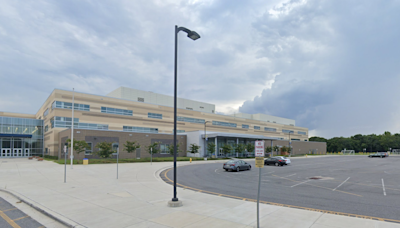Search results
Signature. Albert Einstein ( / ˈaɪnstaɪn / EYEN-styne; [4] German: [ˈalbɛɐt ˈʔaɪnʃtaɪn] ⓘ; 14 March 1879 – 18 April 1955) was a German-born theoretical physicist who is widely held to be one of the greatest and most influential scientists of all time. Best known for developing the theory of relativity, Einstein also made ...
- Alfred Kleiner
- Virtually all modern physicists
- Physics, philosophy
- Heinrich Friedrich Weber
- Overview
- Childhood and education
Albert Einstein was a famous physicist. His research spanned from quantum mechanics to theories about gravity and motion. After publishing some groundbreaking papers, Einstein toured the world and gave speeches about his discoveries. In 1921 he won the Nobel Prize for Physics for his discovery of the photoelectric effect.
Read more below: From graduation to the “miracle year” of scientific theories
What is Albert Einstein known for?
Albert Einstein is best known for his equation E = mc2, which states that energy and mass (matter) are the same thing, just in different forms. He is also known for his discovery of the photoelectric effect, for which he won the Nobel Prize for Physics in 1921. Einstein developed a theory of special and general relativity, which helped to complicate and expand upon theories that had been put forth by Isaac Newton over 200 years prior.
How Albert Einstein Developed the Theory of General Relativity
Learn more about why it took Albert Einstein years to express his ideas mathematically.
Einstein’s parents were secular, middle-class Jews. His father, Hermann Einstein, was originally a featherbed salesman and later ran an electrochemical factory with moderate success. His mother, the former Pauline Koch, ran the family household. He had one sister, Maria (who went by the name Maja), born two years after Albert.
Einstein would write that two “wonders” deeply affected his early years. The first was his encounter with a compass at age five. He was mystified that invisible forces could deflect the needle. This would lead to a lifelong fascination with invisible forces. The second wonder came at age 12 when he discovered a book of geometry, which he devoured, calling it his “sacred little geometry book.”
Britannica Quiz
All About Einstein
Einstein became deeply religious at age 12, even composing several songs in praise of God and chanting religious songs on the way to school. This began to change, however, after he read science books that contradicted his religious beliefs. This challenge to established authority left a deep and lasting impression. At the Luitpold Gymnasium, Einstein often felt out of place and victimized by a Prussian-style educational system that seemed to stifle originality and creativity. One teacher even told him that he would never amount to anything.
Yet another important influence on Einstein was a young medical student, Max Talmud (later Max Talmey), who often had dinner at the Einstein home. Talmud became an informal tutor, introducing Einstein to higher mathematics and philosophy. A pivotal turning point occurred when Einstein was 16 years old. Talmud had earlier introduced him to a children’s science series by Aaron Bernstein, Naturwissenschaftliche Volksbucher (1867–68; Popular Books on Physical Science), in which the author imagined riding alongside electricity that was traveling inside a telegraph wire. Einstein then asked himself the question that would dominate his thinking for the next 10 years: What would a light beam look like if you could run alongside it? If light were a wave, then the light beam should appear stationary, like a frozen wave. Even as a child, though, he knew that stationary light waves had never been seen, so there was a paradox. Einstein also wrote his first “scientific paper” at that time (“The Investigation of the State of Aether in Magnetic Fields”).
Jul 20, 2023 · Albert Einstein was born on March 14, 1879, in Ulm, Württemberg, Germany. He grew up in a secular Jewish family. His father, Hermann Einstein, was a salesman and engineer who, with his brother ...
- Einstein’s Early Life (1879-1904) Born on March 14, 1879, in the southern German city of Ulm, Albert Einstein grew up in a middle-class Jewish family in Munich.
- Einstein’s Miracle Year (1905) While working at the patent office, Einstein did some of the most creative work of his life, producing no fewer than four groundbreaking articles in 1905 alone.
- From Zurich to Berlin (1906-1932) Einstein continued working at the patent office until 1909, when he finally found a full-time academic post at the University of Zurich.
- Einstein Moves to the United States (1933-39) A longtime pacifist and a Jew, Einstein became the target of hostility in Weimar Germany, where many citizens were suffering plummeting economic fortunes in the aftermath of defeat in the Great War.
Albert Einstein was a German-born theoretical physicist who is widely held to be one of the greatest and most influential scientists of all time. Best known for developing the theory of relativity, Einstein also made important contributions to quantum mechanics, and was thus a central figure in the revolutionary reshaping of the scientific understanding of nature that modern physics ...
People also ask
Who was Albert Einstein?
Where did Albert Einstein grow up?
How old was Albert Einstein when he died?
Is Albert Einstein Jewish?
Albert Einstein, (born March 14, 1879, Ulm, Württemberg, Ger.—died April 18, 1955, Princeton, N.J., U.S.), German-born Swiss-U.S. scientist. Born to a Jewish family in Germany, he grew up in Munich, and in 1894 he moved to Aarau, Switz. He attended a technical school in Zürich (graduating in 1900) and during this period renounced his German ...
Albert Einstein, the brilliant physicist and Nobel laureate, revolutionized our understanding of the universe with his theory of relativity and became a symbol of genius that continues to inspire minds worldwide.


